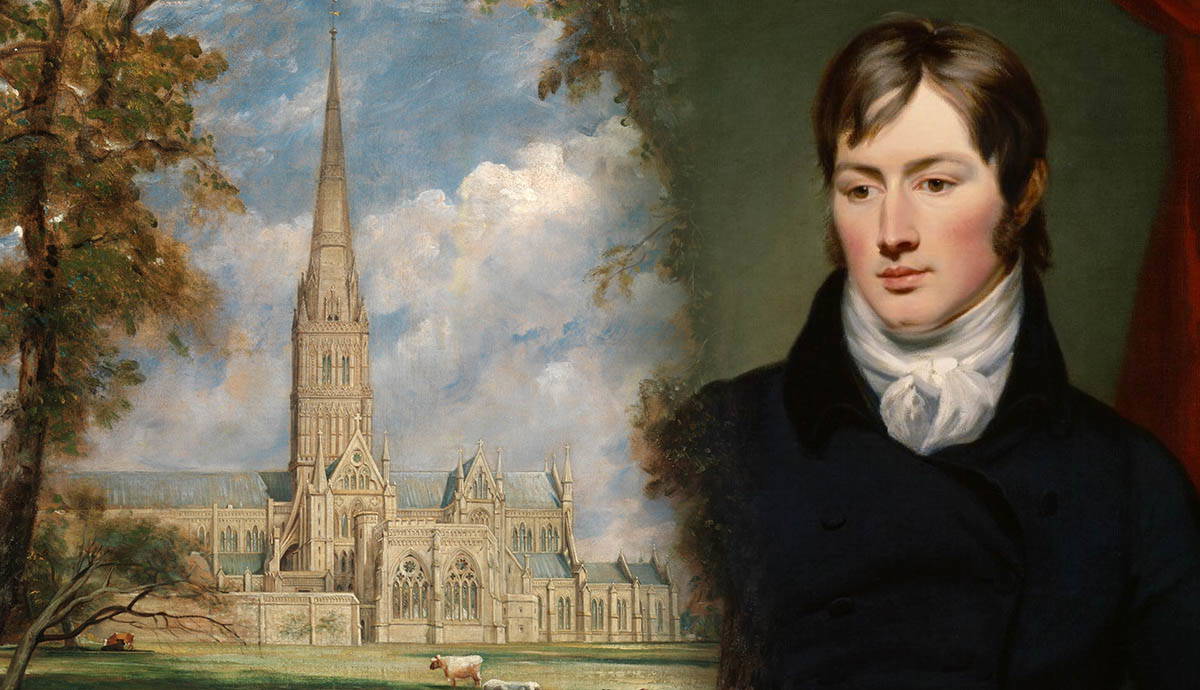
Known for his timeless landscapes, British artist John Constable contributed to the shift from Romanticism filled with mythology to a more realistic take on painting with lifelike clouds and emotive rural scenes.
Here, we’re exploring six interesting facts about John Constable that you may not already know.
The area near Constable’s home is known as “Constable Country”

Always deeply passionate about painting landscapes, the areas depicted in Constable’s masterpieces have become known lovingly as “Constable Country,”
“Constable Country is located in his native valley of the River Stour, scenes of which he painted time and time again throughout his life. Tourists can visit the area and take in some of his favorite painting spots for themselves.
During his lifetime, Constable sold only 20 paintings in Britain

Known today as one of Britain’s most important painters, he actually sold more artwork in France than he did in his native country.
Constable exhibited his work for the first time in 1802 and by 1806, he was producing watercolors of the picturesque Lake District. Still, the exhibitions of these works in 1807 and 1808 didn’t gain any public recognition.
Once Constable became a father in 1817, however, it was necessary to sell paintings and make his artwork a commercial success. He started painting on a large scale, literally. Out of this period came his first notable work The White Horse which was completed on a 1.2-meter (6.2-foot) canvas.

It was shown at the 1819 Royal Academy, gaining his first real taste of notoriety and the painting spurred a series of well-received work. Even though he only sold 20 paintings in Britain during his whole career, he sold the same amount in only a matter of years in France.
Perhaps this is due in part to the shift from romanticism to realism and naturalism that was prominent in France at the time.
When Constable’s wife died, he swore he’d never paint again
Constable met Maria Bicknell in 1809 during a visit to his hometown of East Bergholt. It was where he most enjoyed sketching and painting but their romance wasn’t received well by family members.

With parents meddling in the affairs of love and eventually forbidding the impending marriage, it was a stressful time for Constable. He would find solace through painting and during this tumultuous time created Boatbuilding, The Stour Valley, and Dedham Villiage using an outdoor easel.
In a rather bittersweet turn of fate, Constable’s father died in 1816. The inheritance he received from the death gave Constable the independence he needed to marry Maria without parental approval and that’s exactly what they did.
Maria had tuberculosis and the couple would move around depending on where things were said to be “healthier.” They lived in Hampstead instead of “dirty” central London and during the early 1820s visited Brighton often, attempting to improve her health.

Sadly, Maria died in 1828. Constable was devastated and decided he would never paint again. Of course, he changed his mind and perhaps his art helped him through the pain of her loss. He would spend the rest of his life as the sole provider for their seven children.
In Constable’s most famous painting Hay Wain, you can see his neighbor’s house to the left
When Constable and his family moved to Hampstead for Maria’s health, he began painting the heath, becoming especially fascinated with clouds. His small sketches of the skies would become interesting studies on the fleeting nature of clouds and how to capture such whimsy with paint.

Still, during this period he contrasted these sketches with his large landscapes, initiating a collection of masterpieces including Stratford Mill, View on the Stour Near Dedham, The Lock, The Leaping Horse, and one of his best-known works, Hay Wain.
Hay Wain depicts a classic Constable landscape scene in his signature style. The house on the left belongs to his neighbor, further solidifying the fact that he often painted his hometown in Suffolk, and the lifelike clouds are a nod to his long-time study of them.
Before committing himself to painting, Constable worked with corn

Constable was born to a wealthy family. His father was a corn miller, owning a house and small farm. Around 1792, Constable entered the family corn business but was sketching constantly in the meantime. In 1795, he was introduced to Sir George Beaumont, the famous connoisseur. The meeting inspired him to pursue art above all else.
Constable sketch of Coleorton Hall during a visit with its owner, Sir George Beaumont. Then, in 1799, he met Joseph Farington, whetting his appetite even further and entered the Royal Academy Schools. His father was supportive, although rather begrudgingly.
Constable was so committed to painting in a way that felt true to him that he even turned down an art teaching job in the military to pursue his passion. He’d later find out that making money in the art world would take more than talent and a love for landscapes. Still, he found his way.
Constable was known to be aggressively critical of contemporary art movements

In 1811, Constable took up residence in Salisbury with the Bishop of Salisbury. The bishop was an old family friend and Constable developed a close friendship with the bishop’s nephew, John Fisher.
Their correspondence serves as an intimate record of Constable’s deepest thoughts and feelings. It’s how we know that he’d often react candidly and sometimes aggressively to contemporary criticism. He suffered through complete self-doubt and was an extremely driven and ambitious man.
Perhaps these predispositions shed light on the fact that he was not only hypercritical of himself but toward other artists as well.
In 1829 at 52 years old, Constable started lecturing at the Royal Academy. He taught landscape painting and was known to be particularly unimpressed by the Gothic Revival movement happening in the art world at the time.
Constable died in 1837 and is buried with his wife and children.






